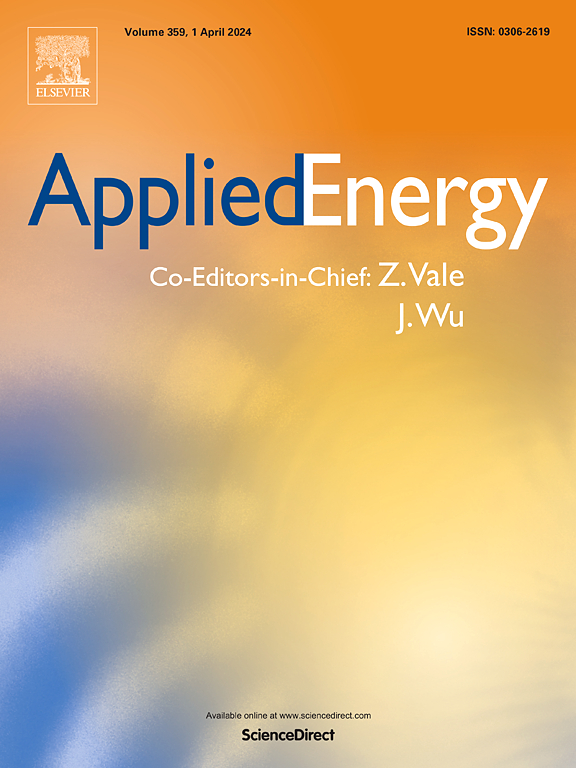Parallel-Execute-Based Real-time Energy Management Strategy for FTPSS integrated PV and ESS
IF 10.1
1区 工程技术
Q1 ENERGY & FUELS
引用次数: 0
Abstract
Constructing a flexible traction power supply system (FTPSS) integrating railway power conditioner (RPC), energy storage system (ESS), and photovoltaic (PV) is essential to realize low-carbon and economical railway transportation. However, the existing rule-based energy management strategies (EMS) only focus on RPC and ESS, whose applicability and economy are limited for FTPSS accessed PV. In addition, the operational optimization model of FTPSS is complex and data-intensive, resulting in the existing optimization EMS being mostly poor at reliability and timeliness. To this end, a parallel-execute-based real-time EMS for FTPSS integrated ESS and PV is proposed. First, the real-time collaborative management of PV, ESS, and RPC is realized with the improved rule-based EMS. Then, considering the operation cost and the three-phase voltage unbalance rate (TVUR), the multi-objective optimization model of FTPSS is built. Further, a coordination mechanism between the rule-based and optimization EMS is proposed. By executing the rule-based and optimization EMS in parallel and switching their reference commands within the real-time management time threshold, the EMS's reliability, timeliness, and economy performance can be improved simultaneously. Finally, the proposed EMS is verified based on the measured data from a traction station.
求助全文
约1分钟内获得全文
求助全文
来源期刊

Applied Energy
工程技术-工程:化工
CiteScore
21.20
自引率
10.70%
发文量
1830
审稿时长
41 days
期刊介绍:
Applied Energy serves as a platform for sharing innovations, research, development, and demonstrations in energy conversion, conservation, and sustainable energy systems. The journal covers topics such as optimal energy resource use, environmental pollutant mitigation, and energy process analysis. It welcomes original papers, review articles, technical notes, and letters to the editor. Authors are encouraged to submit manuscripts that bridge the gap between research, development, and implementation. The journal addresses a wide spectrum of topics, including fossil and renewable energy technologies, energy economics, and environmental impacts. Applied Energy also explores modeling and forecasting, conservation strategies, and the social and economic implications of energy policies, including climate change mitigation. It is complemented by the open-access journal Advances in Applied Energy.
 求助内容:
求助内容: 应助结果提醒方式:
应助结果提醒方式:


